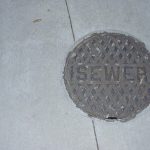The recent polar vortex freeze that shut down cities across the southern US offered a stark reminder. As homeowners rushed to insulate exposed pipes from bursting, water and dwelling remain precariously interconnected through an elaborate infrastructure network transporting this life necessity safely into our homes.
Yet what would happen if water began flowing backward from delivery pipes into personal property instead of projecting outward? Though rare, such reverse trajectories risk pulling external contaminants inward absent safeguards, endangering inhabitants through inappropriate mixing. Vacuum breakers act as critical barriers impeding inverted directional flows, maintaining essential isolation, and separating potable inbound supplies from hazardous outdoors.
This guide examines vacuum breaker functions, capabilities, installation scenarios, and the potential dangers from neglected backflow requiring remediation, equipping homeowners to make informed decisions that protect family safety.
What is Backflow?
To conceptualize the role vacuum breakers play in defending against backward contamination incursions, first, one must grasp the central menace—inverted water migration vectors, dubbed backflow, carrying tainted liquids into clean plumbing systems.
Backflow Defined
The term backflow refers to hydraulic conditions causing liquids to reverse initially intended delivery pathways. Under standard municipal water infrastructure operations, pressurized flow sustained through pumping stations, reservoirs, and narrowly branching local pipework keeps personal property feeds, pushing clean water steadily into sinks, showers, and appliances, facilitating modern lifestyles. Supply-side pressures maintained at a minimum 20 PSI levels during high volume usage periods ensure unidirectional movement at volumes meeting demands while also overcoming any potential suction forces attempting to drag liquids backward externally as customers hydrate plants, fill backyard pools, wash automobiles, or engage wide-open hose nozzles.
However, unusual instabilities diminishing delivery pressures temporarily can create conditions enabling sufficient external suction influences to commence pulling water supplies not only halting outward but withdrawing them fully in reverse—essentially using plumbing arteries feeding dwellings as conduits drawing contaminants like fertilizers, automotive liquids or lawn chemicals accumulating inside residence walls.
Without adequate defenses, these unwanted materials migrate into sinks, showers, or toilets utilized by inhabitants without their knowledge through this concept labeled backflow—the very water meant to facilitate daily living instead of jeopardizing health once compromised. Vacuum breakers function as indispensable fixtures interrupting such infiltration risks.
Causes of Reverse Flow
While infrequent, such pressure condition volatility enabling backflow often arises unexpectedly through regional infrastructure flux – sudden pumps shutting down for maintenance, reservoirs draining for cleaning, nearby construction accidentally rupturing underground water mains, or unanticipated usage spikes drawing heavily from municipal supplies can all diminish delivery pressure gradients keeping home installations isolated long enough for reverse suction escalations to emerge.
In some instances, sites utilizing independent non-municipal sourced supplies such as wells lack carefully monitored delivery oversight controls necessary to regulate adequate anti-backflow psi levels continually. Alternatively, in dense urban regions, closely spaced parallel piping entanglement risks enable building-to-building cross-contamination absent methodical site surveys – a newly constructed chemical plant or hospital complex nearby employing industrial volumes of hazardous liquids can inadvertently set back feed risks for an adjacent older residential property lacking modern isolation codes. Such factors underscore why municipalities enforce updated plumbing standards vigilantly to negate exposure wherever detected.
Yet the overarching principle remains – compromised delivery pressures enable vacuum forces to hijack clean water feeds, dragging unwanted liquids back through plumbing intended strictly for personal usage absent the proper safeguards.
Threats from Backflow
The actual danger stemming from backflow comes not from water retreating briefly upstream through pipes but rather from the types of toxic contaminants. This compromised distribution system risks returning to previously protected properties without occupants’ immediate knowledge or consent.
Depending on the usage scenarios and chemical exposures surrounding external pipework outlets at particular installation sites, reverse water migration can transmit substances, including:
- Bacterial Contamination – stagnant liquids accumulating pathogenic compounds from dead animals, waste systems, or general urban grime contamination upon migrating upstream, then expose inhabitants utilizing sinks and showers once essentially clean
- Toxic Industrial Chemicals – commercial/industrial facilities employing harsh solvents, byproducts, or corrosive agents absent backflow prevention endanger nearby properties whenever sudden VC dips drag their damaging contents externally
- Agricultural Runoff – pesticides, nitrates, and fertilizer concentrations safe for plants but hazardous for human ingestion concentrate over time in soil and pooling water, posing heightened infiltration risks after rainfall absent VC installations keeping such properties structurally isolated
- Boiler Additives – water treatment amendments like corrosion inhibitors safeguard commercial HVAC equipment but prove toxic when consumed internally, making another hot category for potential backflow accidents
These few examples underscore why updated construction standards mandate certain occupancy types to install advanced isolation safeguards between external integration points and interior distribution flows, ensuring backflow never compromises potable water safety.
What Are Vacuum Breakers?
Installation fixtures known as vacuum breakers function as indispensable fixtures interrupting backflow infiltration risks by strategically inhibiting the ability of directionally compromised distribution lines to convey liquids in any orientation beyond strictly outbound trajectories. By integrating modular in-line check valves triggered at precise pressure differentials, vacuum breakers offer reliable mechanical insurance policies against catastrophic health consequences stemming from cross-contamination absent more elaborate modern isolation infrastructure upgrades.
Operational Principles
As their descriptive name suggests, vacuum breakers contain special check valves tensioned through small springs designed to remain firmly sealed whenever adequate outbound (forward) pressure flows press inward against the gates like typical delivery conditions. However, should deltas reverse, enabling suction forces to overpower the meager spring resistance momentarily, the valves should open briefly to allow air entry into the lines. This effect essentially breaks the vacuum suction cycle, dragging liquids backward by eliminating the adverse pressure gradient required to sustain reverse water movement externally.
The temporary opening likewise interrupts hydraulic continuity, enabling undesirable mixed external and internal liquids to migrate across containment zones in either direction – any previously accumulated backyard fertilizers, for example, fail to breach points downstream closer to internal fixtures and personal property utilization points.
Once external pressure levels stabilize above the minimal functional thresholds, the antechamber containing the check mechanisms passively resets itself through a process known as atmospheric venting. Air insertion breaks suction forces, temporarily commandeering pipes to pull water from clean source locations. This process defuses reverse flow momentum while avoiding durable valve seal-wearing effects that could enable more permanent breaches. The valve spring closed once again safely as the balancing delivery pressure resumed equilibrium.
By dynamically sensing directionality differentials built into distribution systems and inserting calculated countermeasures enabling containment zone isolation sustainment, vacuum breakers offer simplified yet reliable protection compared to overhauling entire supply infrastructures. Their modular nature also allows for integrating protective layers at customized monitoring points to detect attempted backflows through pressure trend anomalies. Both new constructions and existing retrofits employ these technologies based on exposure assessments.
Key Characteristics
Commercial and residential-rated vacuum breaker products share a range of unifying performance attributes:
- Dynamic Sensing – continuously tracks pressure trends instead of relying on static configurations vulnerable to undetected manipulation
- Rapid Response – inserts countermeasures immediately during detection events rather than relying on system-wide controls.
- Venting Capabilities – enables controlled air entry while closing check valves and re-isolating zones
- Resilient Materials – corrosion-resistant metals and commercial-grade polymers withstand high/low temps and UV stresses from outdoor installations
- Modularity – inline form factors allow insertion across flow zones without requiring system overhauls
- Passive Operation – functions autonomously without power or telemetry requirements
- Minimal Maintenance – durable seals and smooth cycling with high longevity between inspection intervals
- Cost Effectiveness – significantly more affordable than comprehensive plumbing infrastructure modernization projects
These collective strengths across responsiveness, independence, longevity, and installation flexibility make vacuum breaker units staples within municipal plumbing codes and utility provider system hardening initiatives as accessible protective layers against cross-contamination absent costly buried pipework overhauls. Their capabilities in managing identifiable risks also make them commonplace accessories supplied by conscientious plumbing contractors catering to homeowners invested in sustaining family safety.
Vacuum Breaker Classifications
While sharing fundamental operational blueprints described above, the plumbing industry delineates vacuum breakers into several classifications based on calibrated sensitivity ranges, viable installation environments, and anticipated backflow source types requiring isolation:
- Atmospheric Vacuum Breakers – Designed to protect against non-health hazard water sources pulling contaminants into drinking lines; appropriate for outdoor hose bib attachments but cannot sustain constant line pressure else failure likely over time; lacks capacity defending against specific chemical solutions, therefore avoiding such exposure risks remains imperative
- Hose Connection Vacuum Breakers – For handling garden hoses along exterior walls, these units provide protection similar to AVBs but allow managing pressurized supply configurations through enhanced resilience; easy screw-on integration across household spigots
- Pressure Vacuum Breakers – Rated for more hazardous commercial facility conditions involving pressurized lines and chemical contaminant risks; contains resilient seals and an intermediate vent zone checking bi-directional flows
- Reduced Pressure Zone Assemblies – Highest protection devices integrating multiple inline check valves along primary and intermediate relief vents continually sampling across encapsulated zones to verify flows remain unidirectional outward; vital for industrial sites/critical occupancy facilities
Assessments gauge site specifics like the scale and orientation of buried distribution lines, proximity and density of neighboring properties, commercial/municipal pumping infrastructure stability histories, and chemical usage in the immediate vicinity to determine adequate vacuum breaker capacity fitting, given the potential for backflow risk exposure over decades. At a minimum, outdoor garden hose bibs merit simple AVB or hose connector integration, while facilities managing industrial liquids or processes warrant installing advanced RPZA devices maintaining stringent unidirectional flow verification and compartmentalized pressure differentials across intake points.
In summary, vacuum breakers constitute indispensable protective measures against the catastrophic contamination consequences of unanticipated clean water supply backflows through aging pipework lacking adequate unidirectional flow oversight. Compared to infrastructure overhauls, their inexpensive modularity enables flexibly hardening defense monitoring across zones likely experiencing transient dips, jeopardizing isolation integrity over time.





